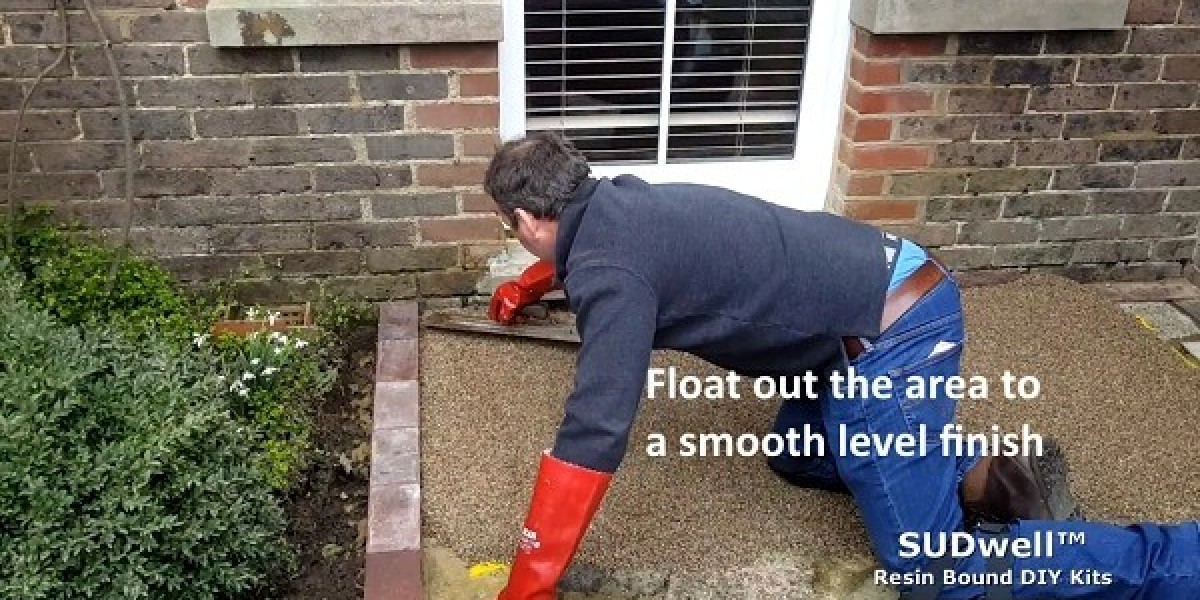When it comes to enhancing your outdoor spaces, resin bound systems have become a preferred choice for homeowners and property developers alike. Whether you’re considering a patio for leisure and entertaining or a driveway designed to withstand regular vehicle traffic, understanding the unique requirements of each application is essential. While both surfaces may use the same materials—resin and decorative aggregates—the design goals, preparation, and technical specifications differ in meaningful ways.
This article explores the differences between a resin bound patio and a resin bound driveway, with a focus on load requirements, design flexibility, and installation techniques. Drawing from the proven three-step process used by The Resin Bonded Slab Company, we’ll highlight how the same base material can serve very different purposes with precision and long-lasting results.
Differences in Load Requirements
The most immediate and fundamental difference between a resin bound driveway and a resin bound patio is how much weight each surface is expected to bear.
A patio typically supports only foot traffic, furniture, and possibly light garden accessories. Because of this, the required installation depth is less than that of a driveway. A typical resin bound patio might be laid to a depth of 15mm, which is more than sufficient for walking, lounging, and general leisure use.
In contrast, a resin bound driveway must endure the consistent load of vehicles, including the turning force from tires and potential oil or fuel spills. For this reason, it is laid at a minimum depth of 18mm, often more, depending on the aggregate size and vehicle types expected. The underlying surface also needs to be more robust—usually a well-prepared tarmac or concrete base that has been cured and cleaned thoroughly. If concrete is used, a primer is applied before the resin to ensure full bonding.
This is a crucial point emphasized in the three-step installation method promoted by The Resin Bonded Slab Company: preparation is everything. The surface must be clean, dry, and solid to provide long-term durability, particularly under heavier loads.
Customization Options for Each Use
Despite their differences in functional use, both resin bound patios and driveways offer extensive customization in terms of color, texture, and design. In fact, the ability to create bespoke looks is one of the main reasons homeowners gravitate towards resin bound surfaces.
A patio is often seen as an extension of the home’s living space. This means aesthetics take center stage. With resin bound patios, homeowners can select from a wide variety of aggregates—from soft, sandy tones to bold, contrasting stones. Patterns, borders, and even logos can be incorporated into the design, allowing for complete personalization.
For a resin bound driveway, customization is also available, but with a slightly different focus. While visual appeal is important—especially for curb appeal and resale value—durability and slip resistance are just as vital. This influences the choice of aggregate size and texture. Driveways often use slightly coarser aggregates to provide better traction, especially in wet or icy conditions.
Still, both applications benefit from the permeable nature of resin bound systems. Rainwater drains through the surface into the ground below, helping to reduce puddling, prevent erosion, and meet Sustainable Drainage System (SuDS) compliance. This makes resin bound both a visually attractive and environmentally friendly option.
Installation Techniques Compared
While the materials are the same—UV-stable resin and decorative aggregates—the actual installation process varies slightly depending on whether you’re building a patio or a driveway.
In both cases, the process follows three key stages:
Base Preparation:
This is critical for any resin bound surface. For a patio, the load requirements are lower, so a thinner concrete or tarmac base may be acceptable. For a driveway, the base must be load-bearing and completely stable. In both cases, cleanliness and dryness are essential, as resin won’t adhere properly to damp or dirty surfaces. When working with concrete, applying a resin primer ensures maximum adhesion.Mixing Resin and Aggregate:
Both patios and driveways require the resin and aggregate to be thoroughly mixed in a forced-action mixer. This ensures each stone is evenly coated for a consistent look and durable structure. Time is critical here—resin begins to cure quickly, so delays can lead to uneven finishes. For driveways, this stage must be carried out with even greater attention to consistency, as any flaw can lead to structural weaknesses under vehicle stress.Application and Finishing:
After mixing, the blend is applied directly to the prepared surface. For patios, this might be done more delicately to accommodate intricate patterns or shapes. For a resin bound driveway, the surface must be laid evenly and trowelled with precision to the correct depth, ensuring strength and uniformity. Working with a wet edge is key to avoid visible joins or inconsistencies. Once the surface is laid, it must be left to cure undisturbed—typically for at least 24 hours.
In both applications, weather conditions are an important consideration. Installation should be done in dry weather with appropriate temperatures to allow proper curing and prevent issues such as blooming or discoloration.
Conclusion: Same Material, Different Purposes
At first glance, a resin bound patio and a resin bound driveway may appear to be similar. They use the same materials, offer the same design flexibility, and follow a comparable installation process. However, when you take a closer look at the purpose and performance expectations, the differences become clear.
A resin bound patio focuses on comfort, beauty, and leisure—making it a perfect space for relaxing, entertaining, or extending the feel of your home outdoors. A resin bound driveway, on the other hand, must be designed and installed with durability, safety, and long-term function in mind.
The Resin Bonded Slab Company’s straightforward three-step process ensures that whether you're laying a pathway, a patio, or a driveway, each surface is constructed to the highest standard. From base preparation to final finishing, every stage is handled with care and precision.
So whether you’re dreaming of a stylish outdoor seating area or a strong, attractive driveway that can handle daily traffic, resin bound surfacing provides a solution that balances performance with style. Just remember: the end result may look similar, but the planning behind each application must be tailored to its unique use.







